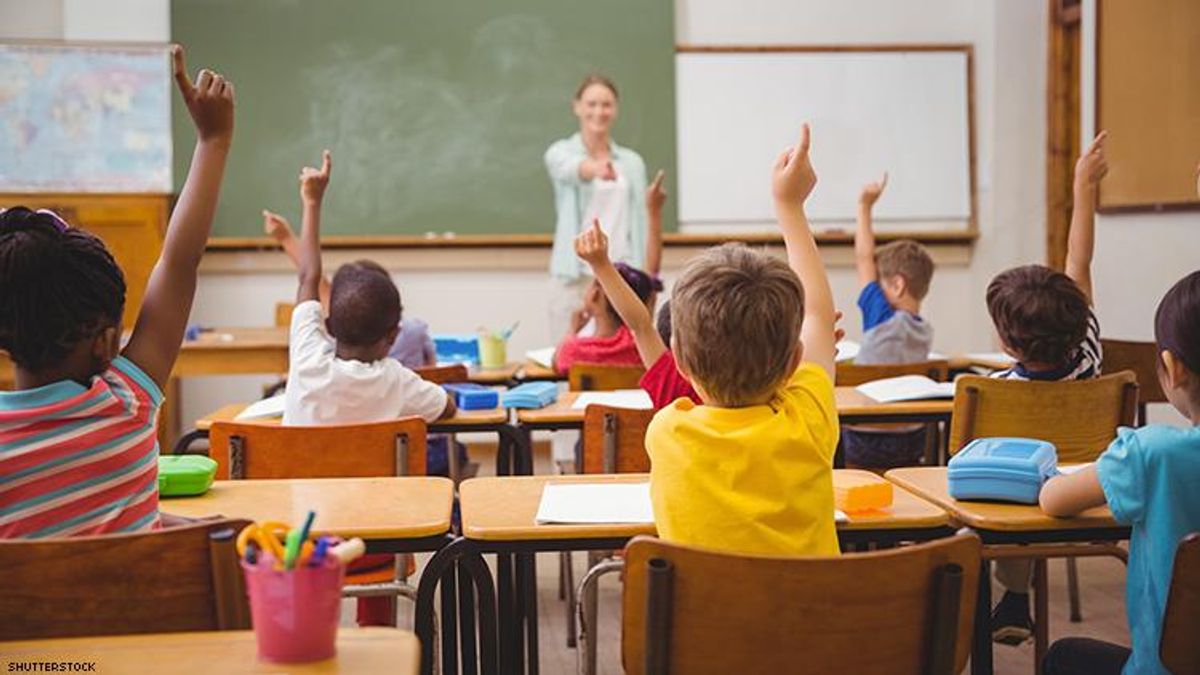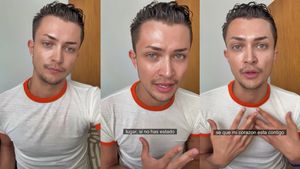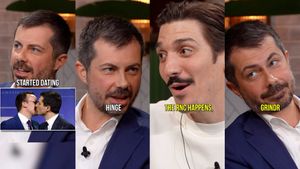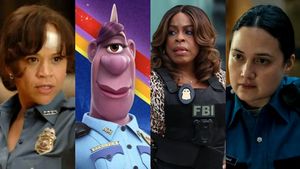My oldest daughter's first homework assignment in kindergarten was to bring a picture of her family to share with her new classmates as they got to know each other. That year, her classroom included Black, Latinx, and Asian students, English Language Learners, students with disabilities, Muslims and Jews and Christians and atheists, and one student -- my daughter -- with two moms. I was worried for my daughter as she went proudly off to "big kid school" with her photograph, wondering what lessons the day's activities would teach her.
I thought of that day when I read what Rachel Crutchfield, spokeswoman for Informed Parents of Rocklin (Calif.), had to say about new LGBT-inclusive curricular standards approved by her local school board: "the concept of sexual orientation is far too complex of a topic for elementary-aged children to be introduced to at school. Children in second grade simply do not have the tools to comprehend sexuality, nor do we want them to." What does she think my daughter's teacher should have said when our family was introduced to the class?
What students learn about themselves, their families, and our nation's history is being debated right now in California, in ways that have profound implications for the experience, learning, and well-being of every student in the United States -- including those whose family photos include LGBTQ people, and those may grow up to by LGBTQ themselves. GLSEN's most recent National School Climate Survey shows that LGBTQ students who attend schools with curriculum that is inclusive of LGBTQ people, history, and events have more accepting schools and better academic outcomes. The report also reveals that only 19.8 percent of LGBTQ students were taught positive representations about LGBTQ people, history, or events in school, and only 6.7 percent of LGBTQ students received LGBTQ-inclusive sex education. Change is profoundly necessary, and we still have a good distance to go.
The good news? The current state of this debate provides us all with a clear call to action, and many reasons for hope for the future, if we stay engaged.
On Friday, May 3, nearly 700 students were kept home from school by parents in the Rocklin School District protesting the inclusion of LGBTQ historical figures in new elementary social studies lessons in accordance with California's FAIR Education Act. The Act -- literally the "Fair, Accurate, Inclusive, and Respectful" Education Act -- added LGBT people and people with disabilities to the California Education Code's Social Content statue, which requires social studies classes K-12 to include the numerous groups of individuals who have contributed to, and continue to contribute to, the economic, political, and social development of California and the U.S.
One thing to make very clear is that there is no state-mandated curriculum. Indeed, the process that the law set in motion was designed to pass the baton via the California Department of Education to the local school boards closer to the will and intention of individuals in districts across California -- including Rocklin. The law passed in 2011, putting a formal implementation process into motion that included years of revision of the state curricular guidelines to include the two new groups, and, as just happened in Rocklin, the district-level adoption of specific curricular content and lesson plans. At both stages, the public has been engaged in hearings and comment periods.
Local engagement makes a difference. Because concerned parents and teachers have shown up for the discussions and hearings at all levels, the process is working to produce good guidelines that the majority of parents support. While nearly 700 Rocklin students staying home may sound like a concerningly large number, this represents only 13 percent of the district's approximately 5,500 K-5 students, or only 5-6 percent of the district's 12,000 total students K-12. That means that the parents of nearly 90 percent of the town's elementary students did not join the protest. Given the level of vitriolic debate on this subject in the past, that is a pretty encouraging figure. And by the time any new lessons are put into any classrooms, the public will have had multiple opportunities to learn more about the content and purpose of the new curricular materials.
And thorough implementation of the FAIR Education Act is not about LGBTQ students only. All students deserve to see themselves and their lives and families reflected in school curriculum, and to learn about the histories and legacies of the communities to which their peers belong. In the current conversation around the Rocklin School District, parents themselves are making that connection. One Black parent who spoke out in support of the new curriculum pointed out that the traffic light was invented by a Black man, Garrett Morgan, whose invention literally changed every city and town in the country -- a fact that she wished she had been taught growing up.
We can do this, it's a long term process, but as we are seeing in California right now, it is a process that is actually proceeding effectively and well, even over the objections of a few. And if we achieve the aims of the FAIR education act, my daughter, and other students like her or like me will be able to see their lives and families reflected at school -- giving them the opportunity that all students deserve, to be themselves and to learn and thrive.

Eliza Byard is the executive director of GLSEN, which works to create safe and affirming schools for all, regardless of sexual orientation, gender identity, or gender expression. Follow Eliza on Twitter at @EByard.



















































































